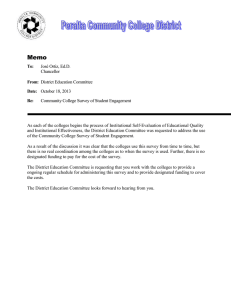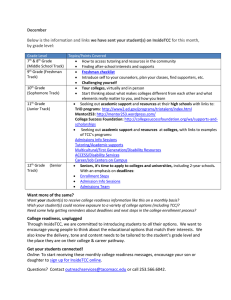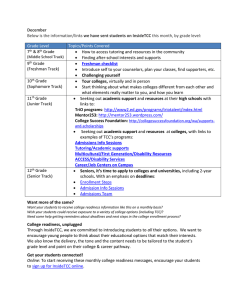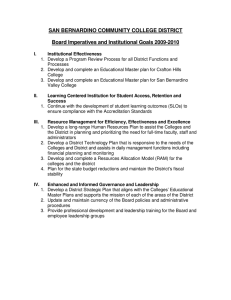A Brief History of Basic Skills BaSk Committee, September 2009
advertisement
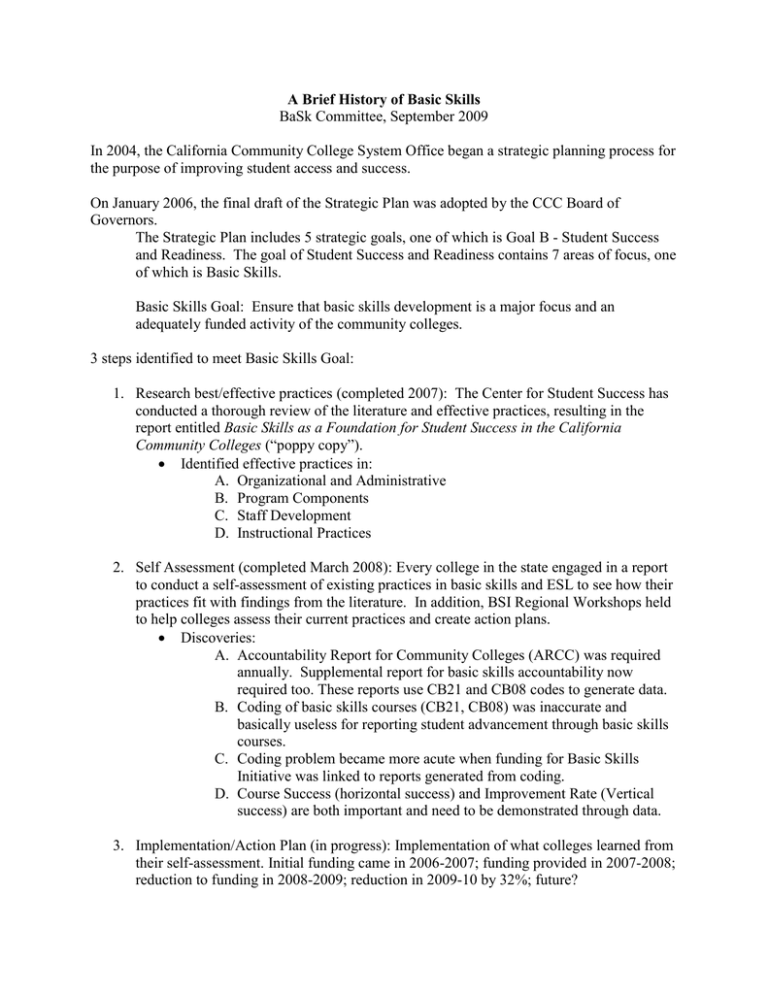
A Brief History of Basic Skills BaSk Committee, September 2009 In 2004, the California Community College System Office began a strategic planning process for the purpose of improving student access and success. On January 2006, the final draft of the Strategic Plan was adopted by the CCC Board of Governors. The Strategic Plan includes 5 strategic goals, one of which is Goal B - Student Success and Readiness. The goal of Student Success and Readiness contains 7 areas of focus, one of which is Basic Skills. Basic Skills Goal: Ensure that basic skills development is a major focus and an adequately funded activity of the community colleges. 3 steps identified to meet Basic Skills Goal: 1. Research best/effective practices (completed 2007): The Center for Student Success has conducted a thorough review of the literature and effective practices, resulting in the report entitled Basic Skills as a Foundation for Student Success in the California Community Colleges (“poppy copy”). Identified effective practices in: A. Organizational and Administrative B. Program Components C. Staff Development D. Instructional Practices 2. Self Assessment (completed March 2008): Every college in the state engaged in a report to conduct a self-assessment of existing practices in basic skills and ESL to see how their practices fit with findings from the literature. In addition, BSI Regional Workshops held to help colleges assess their current practices and create action plans. Discoveries: A. Accountability Report for Community Colleges (ARCC) was required annually. Supplemental report for basic skills accountability now required too. These reports use CB21 and CB08 codes to generate data. B. Coding of basic skills courses (CB21, CB08) was inaccurate and basically useless for reporting student advancement through basic skills courses. C. Coding problem became more acute when funding for Basic Skills Initiative was linked to reports generated from coding. D. Course Success (horizontal success) and Improvement Rate (Vertical success) are both important and need to be demonstrated through data. 3. Implementation/Action Plan (in progress): Implementation of what colleges learned from their self-assessment. Initial funding came in 2006-2007; funding provided in 2007-2008; reduction to funding in 2008-2009; reduction in 2009-10 by 32%; future? Challenges: A. Need clear action plans, aligned with effective practice/strategy, and target dates B. Need to identify specific practices and methods of implementation C. Need to document successes and areas for improvement; need for hard data to evaluate programs/practices D. Need for organizational change to implement many of the effective practices E. No BS Coordinator/Administrator F. Perceived cost vs. downstream benefits G. Desire to “pilot” programs, without sufficient institutional commitment Where does LPC go from here? Implement BaSk Goals and 5 Year Plan. Leverage resources to make multiple goals happen within limited resources. Educate administrators, faculty and staff on literature review, best/effective practices, and work towards paradigm shift away from “one instructor, one classroom, limited support services” model. Create organizational change that supports efficacy, moves away from “piloting” and institutionalizes successful programs.
